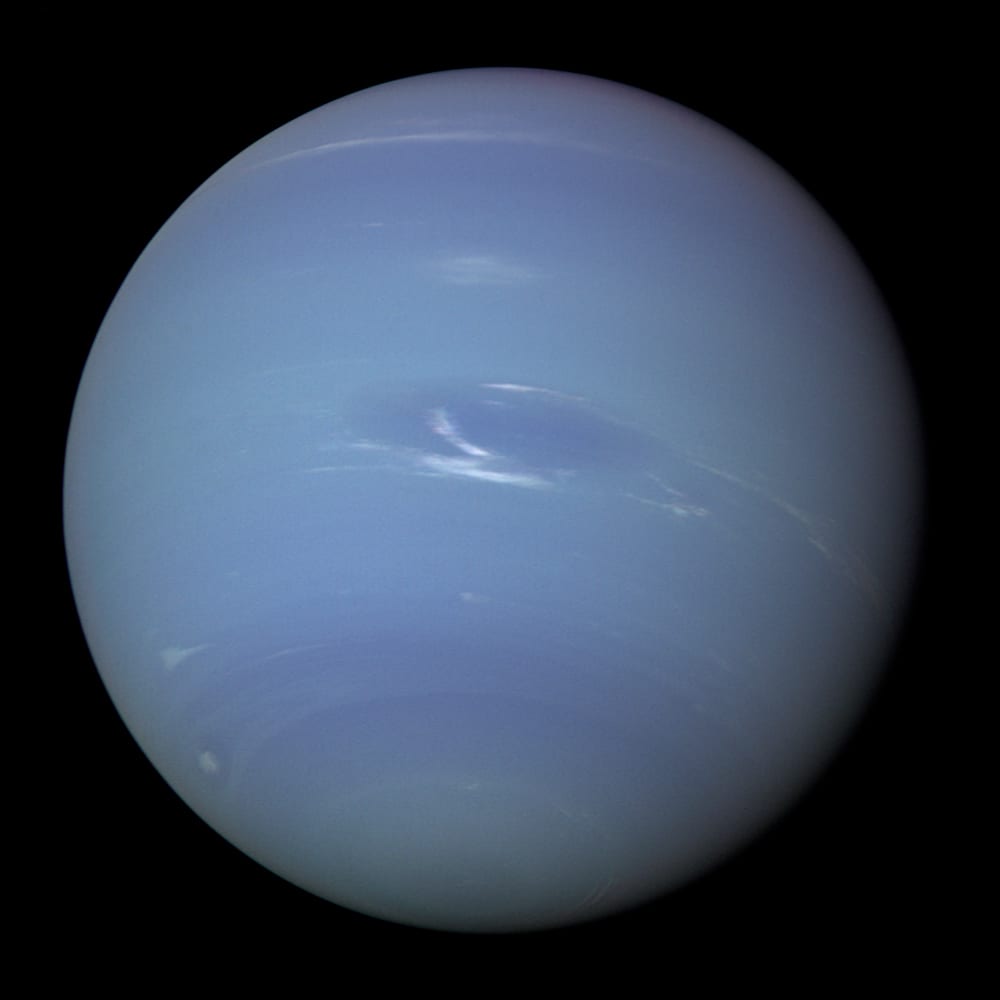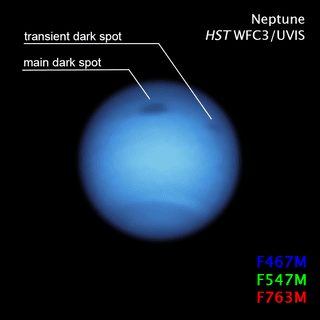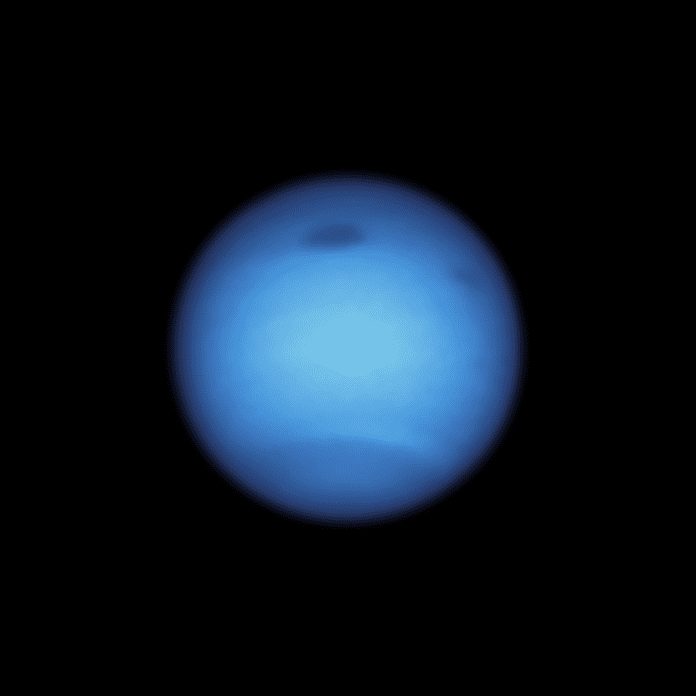Astronomers have been left confused seeing a dark storm of 4600 miles across Neptune change its direction. This has never been seen before. Even though storms like these are not rare, nobody had previously seen one turn back towards the poles from the equator.
The astronomers from the University of California, Berkeley used images from the Hubble Space Telescope. They said the change of direction was ‘unexpected’ and ‘unpredictable’.
Nasa Hubble Telescope also shared the image on Instagram, with the caption – “Now presenting… Hubble’s newest view of Neptune! The image shows a monstrous dark storm near the top centre that’s wider than the Atlantic Ocean, along with a smaller dark spot that emerged nearby in the top right. The giant storm was previously seen moving southward, where storms are expected to vanish due to atmospheric forces near the equator, but it appears to have made a sudden U-turn and drifted back northward.”

The storm was first discovered in 2018 by Hubble, and it was born on Neptune’s northern hemisphere. A year later, it was found drifting southwards. Surprisingly, instead of vanishing, it turned back again to the north, which is ‘something new to see’.
Hubble observed another smaller dark spot in Neptune in January, which temporarily appeared near the larger black spot. It was speculated that it was part of the bigger storm but later drifted away.
“We are excited about these observations because this smaller dark fragment is potentially part of the dark spot’s disruption process,” said Michael H. Wong of the University of California at Berkeley. “This is a process that’s never been observed. We have seen some other dark spots fading away, and they’re gone, but we’ve never seen anything disrupt, even though it’s predicted in computer simulations.”
This dark storm is the fourth spot Hubble has seen on Neptune since 1993. Two other dark storms were also observed on Neptune in 1989 by the Voyager 2 spacecraft, but the storms disappeared before Hubble could see them. Only Hubble can track these storms because of its sharpness and sensitivity. These storms usually fade away after a period of two years. The recent storm was also discovered two years ago in 2018.
Wong said, “It was really exciting to see this one act like it’s supposed to act and then all of a sudden it just stops and swings back. That was surprising.”
Neptune’s Dark Spot Jr.
Coincidently, the smaller dark spot, informally called “dark spot jr.” appeared at the same time when the bigger storm changed its course. It was found near the bigger spot facing the equator. It is smaller than the bigger storm, measuring about 3,900 miles across.

“When I first saw the small spot, I thought the bigger one was being disrupted,” Wong said. “I didn’t think another vortex was forming because the small one is farther towards the equator. So it’s within this unstable region. But we can’t prove the two are related. It remains a complete mystery.”
Further, Wong said, “It was also in January that the dark vortex stopped its motion and started moving northward again, maybe by shedding that fragment, that was enough to stop it from moving towards the equator.”
The astronomers are trying to find more data to figure out if dark spot jr. persisted through the rest of 2020.
Other puzzling observations
The origin of these storms is still unclear. The dark appearance of the storm may be due to an elevated dark cloud layer. This could give hints to the astronomers regarding the storm’s vertical structure.
The other unusual observation or the lack thereof is of bright companion clouds around the storm. These were present when the storm was first discovered in 2018. The clouds may have disappeared when the storm changed its way. According to the researchers, the absence of clouds could tell us more about how these spots evolve.
Further Reading:


